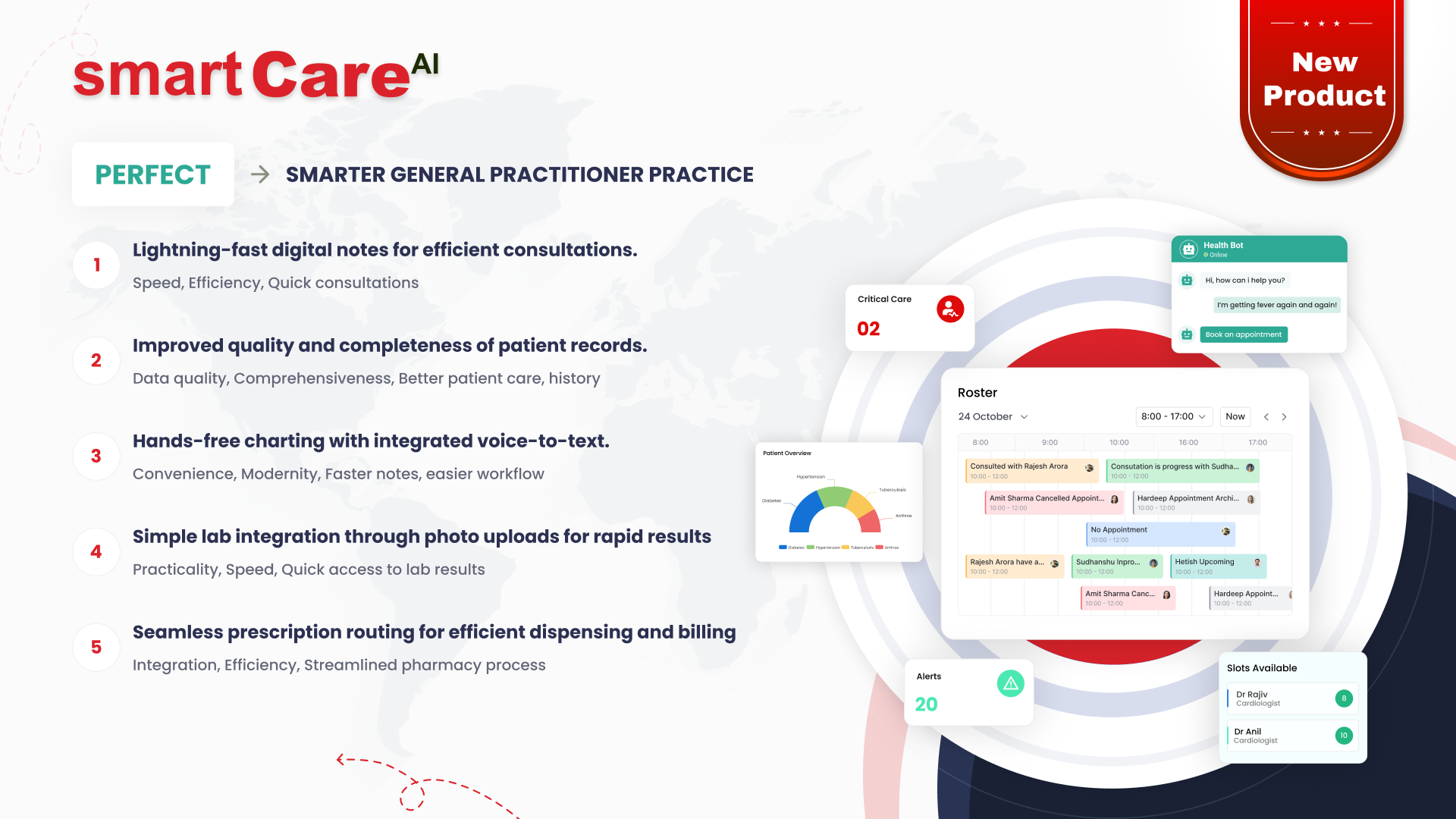Posted On July 15, 2025
Scrum vs Kanban: Which Project Management Style Works for HealthTech
Choosing the right project management method can make all the difference in delivering successful HealthTech solutions. Two popular approaches, Scrum and Kanban, each offer unique advantages. This blog explores both styles and helps you decide which fits best for HealthTech projects.
Understanding the Basics: What Are Scrum and Kanban?
Before diving into which method suits HealthTech, it’s important to understand what Scrum and Kanban are.
-
Scrum is an agile framework that breaks work into fixed-length cycles called sprints, usually 2-4 weeks long. It emphasises roles like Scrum Master and Product Owner, with regular meetings to track progress and resolve issues quickly.
-
Kanban, on the other hand, is a visual workflow system that focuses on continuous delivery. Work items are displayed on a board, moving from one stage to another, with limits on how much work can be in progress at once.
Both aim to improve efficiency and adaptability but differ in structure and flow.
How HealthTech Projects Differ from Traditional Tech Projects
HealthTech projects often face stricter regulations, higher standards for accuracy, and complex stakeholder needs compared to typical software development. This means managing risks, maintaining compliance, and ensuring quality are top priorities.
The pace of innovation is rapid, but mistakes can have serious consequences. So, project management in HealthTech must balance speed with careful validation.
Scrum in HealthTech: Fast-Paced Sprints with Structured Goals
Scrum’s sprint-based approach can work well when HealthTech teams need to focus on delivering small, tested features regularly. The fixed timeframe encourages teams to prioritise tasks and achieve clear goals.
Its structured meetings and defined roles help maintain communication and accountability—critical when collaborating with cross-functional teams, including clinicians, developers, and regulators.
However, Scrum’s rigidity can sometimes slow teams down if changes happen mid-sprint or if requirements are unclear.
Kanban for HealthTech: Visual Workflow and Steady Delivery
Kanban offers flexibility by allowing teams to continuously prioritise and deliver work based on capacity. The visual board provides transparency on task progress, which helps teams spot bottlenecks quickly.
For HealthTech projects with fluctuating priorities or ongoing maintenance needs, Kanban’s flow can be more adaptive. It also supports incremental improvements without the pressure of sprint deadlines.
Still, without fixed timeboxes, it may lack the urgency Scrum provides, which some teams find motivating.
Flexibility vs Structure: Which Approach Suits HealthTech Teams?
Choosing between Scrum and Kanban in HealthTech depends on your team’s needs and project complexity.
-
If you require strict timeframes, clear roles, and regular checkpoints, Scrum can help keep things on track.
-
If your project demands continuous delivery, visual task management, and flexibility, Kanban might be a better fit.
Some teams even combine both, using Scrum for planning and Kanban for workflow visualisation.
Managing Compliance and Quality in HealthTech Projects
HealthTech projects are often subject to strict regulatory standards and require high-quality outputs due to their impact on patient care and safety. Managing compliance and quality control is critical. Scrum’s structured framework, with its regular sprint reviews and retrospectives, can help teams continuously assess compliance at each stage. This iterative process encourages early detection of issues and timely adjustments.
On the other hand, Kanban provides a flexible, visual approach to workflow management. It allows teams to track tasks and spot bottlenecks in real time, ensuring quality control steps are not overlooked. Kanban’s emphasis on limiting work in progress (WIP) helps maintain focus on each task, which is crucial for meeting HealthTech’s stringent quality standards.
Both methods support maintaining compliance but do so in different ways—Scrum through structured reviews and Kanban via continuous workflow transparency.
Team Collaboration: Scrum Stand-ups vs Kanban Boards
Effective communication is essential in HealthTech projects where cross-functional teams, including developers, clinicians, and regulatory experts, need to work closely. Scrum’s daily stand-up meetings foster direct and focused communication, helping teams stay aligned on sprint goals and quickly resolve blockers.
Kanban uses boards that visually represent the workflow, allowing team members to see task progress at a glance without needing constant meetings. This can reduce meeting fatigue and enable asynchronous collaboration, which is helpful when teams are spread across different time zones or roles.
Choosing between the two depends on your team’s preference for meeting-driven updates versus visual, ongoing communication.
Project Visibility and Reporting: What Works Best in HealthTech?
Transparency is vital in HealthTech to keep stakeholders informed and to ensure projects remain on track. Scrum provides detailed sprint reports and burndown charts that give a snapshot of progress and predictability for deliverables. This helps project managers and stakeholders assess risk and manage expectations.
Kanban boards offer real-time visual updates on task status and cycle times, making it easy to identify delays or process inefficiencies. However, Kanban typically requires additional tools or manual reporting to create summary reports for stakeholders.
For projects where formal reporting and predictability are priorities, Scrum may be the better choice. For teams valuing flexibility and continuous workflow monitoring, Kanban provides strong visibility.
Real-World Examples: Scrum and Kanban in HealthTech Applications
Many HealthTech companies use Scrum to manage complex software development, where sprint cycles help deliver functional updates regularly. For example, electronic health record (EHR) systems benefit from Scrum’s iterative feedback loops, ensuring user needs and compliance issues are addressed promptly.
Conversely, Kanban is often adopted in HealthTech maintenance and support teams, where ongoing bug fixes and incremental improvements require a continuous workflow without fixed deadlines. The visual nature of Kanban boards helps teams prioritise urgent tasks, such as security patches or regulatory updates.
Both methodologies have proven effective in different HealthTech scenarios, depending on the project type and team dynamics.
Choosing the Right Fit: Key Considerations for Your HealthTech Project
When deciding between Scrum and Kanban, consider these key factors:
-
Project Complexity and Deadlines: Scrum suits projects needing structured delivery with clear deadlines, while Kanban works well for ongoing, flexible workflows.
-
Team Structure: Scrum benefits teams able to commit to regular meetings and sprint cycles; Kanban suits teams preferring visual task management and fewer meetings.
-
Compliance Needs: Both can manage compliance, but Scrum’s regular reviews may provide more checkpoints for quality assurance.
-
Stakeholder Involvement: Scrum’s formal reporting supports high stakeholder engagement; Kanban offers continuous visibility but may need additional reporting tools.
Ultimately, some HealthTech teams blend both approaches to suit their unique needs, adopting Scrum’s structure with Kanban’s flexibility.
Conclusion
Both Scrum and Kanban have their strengths and can support HealthTech projects effectively, depending on your team’s workflow and goals. Understanding the unique challenges of HealthTech, such as compliance and quality assurance, will guide you in choosing the right project management style.
If you’re looking for expert advice and tailored solutions to optimise your HealthTech project management, visit SmartData Inc. to learn how we can help.








